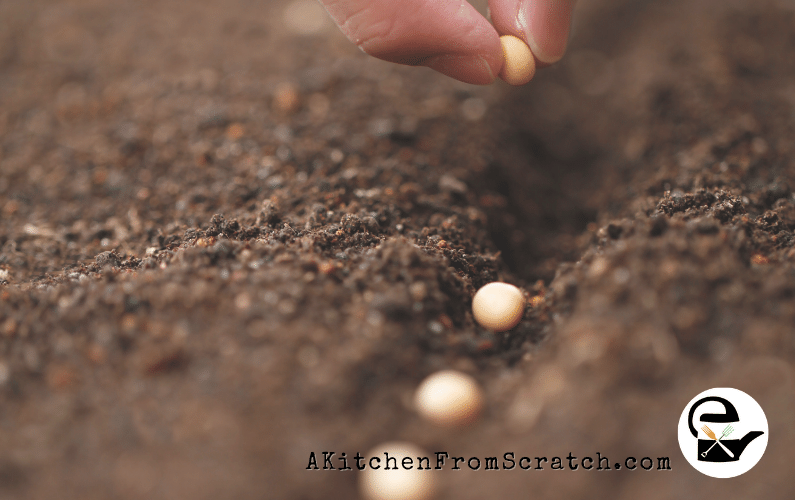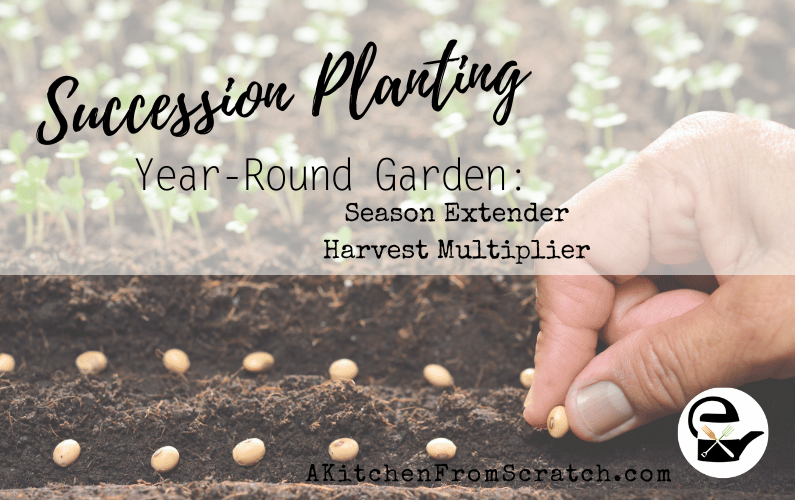As a gardener and grower of delicious fruits and vegetables, you’ll be conscious of maximizing your crops. At first, many people will try to stick to what they consider to be prime growing timelines in the year – however, with just a little know-how, you can create a year-long growing schedule.
One thing that makes succession growing incredible is that it doesn’t require extra space – all you need is timing and an understanding of which crops grow best and when.
What is succession planting?
Succession gardening or succession planting means you can get extensions on the growing periods. By staggering the propagation of crops, you can have a continual supply of those crops – an extended harvest season. Your favorite fruits and veggies can be available from spring to fall.
It means one following another, and rather than needing to fit all your gardening plans between the last frost and spring, you can put in a bit of work all year round to have a redefined growing season.
Simply put, it means you plant, harvest, and plant some more, filling the space of the harvested plant—generally, every two to three weeks. Easy right?
Why should you consider succession planting?
When you start with succession planting, a few extra management moments will come up – and it might feel like a concept needs to be simplified. However, with this method of gardening, you get a lot of benefits:
- You maximize the space in your garden; since you don’t need extra space, you utilize what you already have. Win-win!
- Your growing season is extended by however long you need
- Limitation of pests, disease, and poor weather ruining your whole crop
- Maximization of the yield in both duration and variety
- Fresh produce on demand without the need for extra internal storage (those single big harvests can cause a storage issue when trying to keep everything fresh)
- Reduced spending on grocery store produce. Never purchase greens, herbs, or flowers from the grocery store again!
What method can I use for succession planting?
The great thing about succession planting is that you can cultivate the same plants over and over – so if your radishes are your favorite, you can do just that! Here are several methods to get you started on your succession planting journey.
Variety Planting (Recommended!)
Planning multiple varieties is the way to go if you are looking for a harvest that often exceeds expectations. One of the best-used examples would be potatoes. By planting your cultivars wisely, you can harvest potatoes all summer. Plant early, mid and late season, and you’ll have a summer full of spuds.
Late-season and early-season potatoes will also have their unique flavor profile, size, and texture.
Here are some other veggies with plenty of varieties that work well with this technique: ALL greens: kale, and lettuce varieties are endless. Root vegetables: radishes, carrots, turnips. Flowers: Visit the edible flower garden post.
Beans, peas, really most things can be succession planted during their peak season.
Staggered planting
If you usually plant your seeds in several rows, and everything comes to harvest simultaneously, staggered planting offers a great solution. While you will still map out your rows, you will only plant part of the row. Then after about two to four weeks, plant the rest if you want to extend your harness. Continue this with all of your rows.
As the first section is harvested and begins to die or flag, you can replace that area with a new batch of seeds (depending on what you want to plant). Don’t be afraid to switch it up. Variety is key to successful gardening to table harvesting.
Beans are an excellent option for this.
Intercropping
Intercropping offers the best solution for maximizing their growing times and harvests. Intercropping means pairing crops with different spatial requirements and those with both early and more extended production.
Once you have selected several longer maturing plants or those that need more space, you can choose several plants with fewer space requirements that grow more quickly.
Green onions, chard, carrots, and radishes are great options for intercropping.
One of the most well-known intercropping combinations is planting corn, squash, and beans together – the combinations make the most of the space.
Smaller crops, herbs, or even edible flowers can cover all bare spots – intensive planting is key to less weeding.
PRO TIP: If your plants look sad, they may be planted next to their adversary. Look up companion planting guides for your favorite plants. Companion planning is something you learn from over time.
Pull some, plant some.
Once you notice that your peas and lettuces are beyond their prime, pull them out and replant something else immediately. Discard crops on your compost pile, but be sure to aerate the soil and add some natural organic fertilizer or compost before replanting anything.
Get the most from your compost efforts by following this guide: How to start a DIY Vermicomposting Bin Reduce waste & create fertilizer.
Seasons for succession planting
Planning is one of the essential things for harmonious succession planting. The idea of succession plating is that you will use both cool and warm seasons to grow so that you have a continuous range and supply of fresh vegetables.
Look at your space, and sketch out where you will plant vegetables and when. This map can help you plan for next year and keep track of what worked and what didn’t.
PRO TIP: Keep A Garden Journal!
Cool season crops for succession planting
Many of the best crops for cool season planting are those that you’d call one and done, like cabbages, beets, and carrots. The best cool-season crops are turnips, spinach, peas, kale, carrots, Brussels sprouts, and radishes.
Learn more about how to Extend Your Growing Seasons.
Once your cool season crops are harvested, plant your warm season crops immediately (using the instructions above in the pull some, plant some section). The exception to that rule is that radishes mature in just 25 days so you can get multiple of those in the cool season.
Warm season crops for succession planting
The last expected frost date is the marker for warm-season crops. Warm-season crops for succession planting are corn, eggplants, peppers, sweet potatoes, watermelons, and beans.
Once your warm seasons are up, rinse and repeat with your cool-seasons veggies – or get experimental.
PRO TIP: Keep an eye on the lettuce types heat and frost tolerance as you plant, as some don’t take to the hot or cold season while other thrive.
Make the most of your cold winter veggies with this guide: Winter Solstice For the All-Year Gardener: Learn how to harvest from your winter garden!
Adding flowers for exceptional succession planting
Aside from flowers looking great, they serve a better purpose for successful succession planting. Choose varieties that aren’t self-seeders, or at least not too aggressively.
Having flowers woven into your crop patches means you’ll benefit from pest deterrents, additional harvests, and pollinators all year.
Learn more about edible flowers.
Can I start cool-season veggies in the summer?
Soak the patch in water and cover it for a few days before planting. Sow the seeds, then put the boards back. Once you see the first signs of germination, you can remove the panels. Since you are manipulating how long you harvest, consider growing cool-season veggies in warmer temperatures.
Ensure that you are planting with an adequate shade cloth of at least 40% shade.
PRO TIP: Row covers are great for shade. However, make sure that the pollinators can get to the plants. It’s best to use larger plats for shade.
What other techniques can I use for succession planting?
Planning is step one, but you should learn about mulching, greenhouses, and cold frames to help you tweak growing periods by several weeks.
Get your garden succession planting ready with Upcoming Garden Workshops, or you can get a big helping hand that cares with my Begin your Kitchen GARDEN From Scratch with a Consultation.
Don’t forget to sign up for my handy newsletter so you have plenty of tips, tricks, and gardening know-how delivered straight to your inbox!




